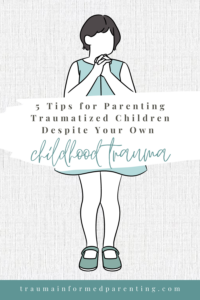Three Tips On Infusing Your Writing With A Trauma-Informed Foundation
- If you want to craft an article with a trauma-informed foundation in order to share your story.
- If you need to do some research on trauma before you write your YA/Tween/Adult novel.
- If you’re crafting your memoir and want to make sure you have the trauma-informed background to help others.
- If you have an idea for a series of articles to help others overcome the effects of trauma.
Then this is for you!
Where Can I Get A Trauma-Informed Foundation?
First of all, you have your experience. What sorts of trauma have you lived through? What has trauma taught you? Have you learned new coping mechanisms? Have specific scriptures that have helped you through? Your experience – your history plus your education (what trauma taught you) are a unique combination. If you have never thought about these questions, now is the time to do it. Take some time and answer these questions before you move on.
What does trauma-informed writing look like?
Trauma-informed writing includes the science and the effects of trauma. Trauma-informed writing includes the Five Bs affected by trauma in some shape or form: brain, biology, body, beliefs, and behaviors. You may also include some of the six risk factors. Trauma-informed nonfiction writing includes personal stories that show instead of just tell. Here is an example:
 If you’re reading this and you, like me, experienced trauma at some point in your life, you may feel as if you aren’t able to parent your kiddos well. I get it. I went from thinking “I got this!” to “I can’t do this!” I was sucked into a chaotic loop some days, weeks, and even months. My kids had triggers. I had triggers. Our triggers entered into a game of tug of war. The result? We all got pulled into a deep pit of mud full of fear, shame, and rejection.
If you’re reading this and you, like me, experienced trauma at some point in your life, you may feel as if you aren’t able to parent your kiddos well. I get it. I went from thinking “I got this!” to “I can’t do this!” I was sucked into a chaotic loop some days, weeks, and even months. My kids had triggers. I had triggers. Our triggers entered into a game of tug of war. The result? We all got pulled into a deep pit of mud full of fear, shame, and rejection.
But, that’s not the end of the story. When I began to research, read, and listen to the material, in essence, become trauma-informed, things began to change. I first had to become trauma-informed for Kathleen (me).
Included in my nonfiction writing I include the effects of trauma, tips, triggers, tools, stories, and encouragement. Some keywords are shame, guilt, neglect, abuse, fear, and rejection (this short list will get you started. You may have your own) You can find more about the effects of trauma, including free trauma training HERE.
How Do You Write Trauma-Informed Fiction?
All of my fiction includes the theme of foster care and adoption and therefore characters who have experienced trauma. This means three elements are present.
The main character should have at least one coping mechanism consistent with a person who has experienced trauma.
Adelina, in the Defining Series (You can grab the first one here for free), recites words from the dictionary and poetry. Sera in The Case of the Missing Person is obsessed with Nancy Drew and solving mysteries, so much so that it sometimes puts her in dangerous situations. Cue – no cause-and-effect thinking. You can find this tween mystery on the book page. Those are just a few examples of trauma-informed coping mechanisms.
The main character should flip in and out of survival mode – flight, fight or freeze.
When faced with a difficult choice, the main character regresses. She can make choices based on her present perception. She’s a master at masking. That’s how trauma plays out. Survival mode. Here’s an excerpt from Defining Home showing rather than telling:
It seemed so surreal. Two teens doing hair and make-up. So normal. So natural. Too bad one of us was aiding a man running a human sex trafficking ring and the other one of us was about to get herself kidnapped to take her down. In the corner of the mirror, I could see the notes I had taken the night before sticking out of my backpack. They seemed to glow and scream at the same time, “Look at me!” Had she seen them?
Villains!” I shrieked, “dissemble no more! I admit the deed! –tear up the planks! here, here! –It is the beating of his hideous heart!
I felt like Poe.The evidence. The charade. Everything screamed guilty while I smiled.
Guilty- adjective 1.culpable of or responsible for a specified wrongdoing.- Defining Home
Hope and healing should be included in the story, but presented in realistic ways.
The main reason I write trauma-informed fiction is that I believe there is hope. There can be healing. When writing a story, I can show this through character change. When the main character is able to overcome obstacles and make progress in her healing journey, it paints a picture of hope for the reader.
Sometimes people think writers are plunking away at their computers trying to write a best seller (maybe some are). Others think we have no idea what we are writing about – in other words, we have no purpose for the story. That’s not true. Every story has a message -whether intended or not.
Why Write Trauma-Informed Fiction?
“Most of us do not learn about the nature of reality through theology or philosophy, or higher mathematics. But all of us readily grasp the language of a parable drawn from the universal human story.” – A Landscape With Dragons
We learn about life through parables. Jesus used them because it is a form of storytelling humans relate to. We learn about the human condition by reading other peoples’ stories. So, if I were raising (teaching or counseling) a teen who had experienced trauma – How could I gently and without confronting, open the door to discussing how trauma affects: the body, brain, biology, behavior, and beliefs (Learn about these here)?
Write (and then read) a book about someone else who has experienced trauma and possesses all the effects, including a coping mechanism, all wrapped up in a mystery/thriller. Then discuss the character.
Include the character’s:
- strengths
- weaknesses
- coping mechanisms
- character change
All without pointing a finger at the teen. THEN…. Let her process and come to conclusions and start conversations herself.
People Are Talking About Trauma
Hopefully, this article has gotten your creative juices flowing. Now. more than every, people are talking about trauma. It’s not some deep dark secret we keep hidden away in a closet anymore. Trauma has been forced out in the open for all to see. We expose it, name it, learn from it, and share our experiences so others can find a way to hope and healing.
I’m passionate about trauma-informed writing because I know we heal through telling our stories. Others can heal through our willingness to share -either through fiction or nonfiction. I write both because it’s that important to me. It’s also important that we represent trauma truthfully. We can’t whitewash over it for novels and articles full of quick fixes and bandaids. Or we can’t do the opposite and write novels and articles full of ONLY darkness and no hope and healing.
I know this article is just the tip of the iceberg when it comes to trauma-informed writing. But, it’s a start. Hopefully, this post will get the conversation started- maybe with your writing group or family, or feel free to leave a comment here.
Looking for some trauma-informed fiction for tweens, teens, or adults?
Check out my books!


